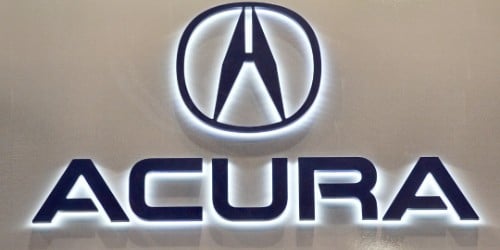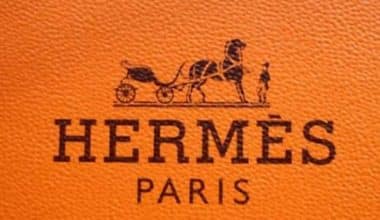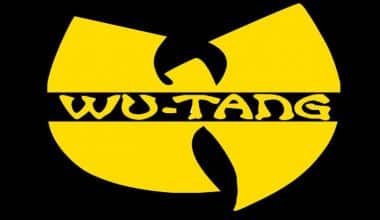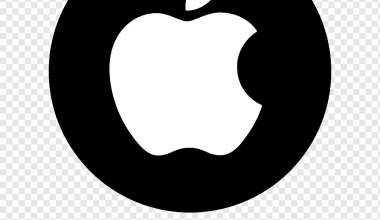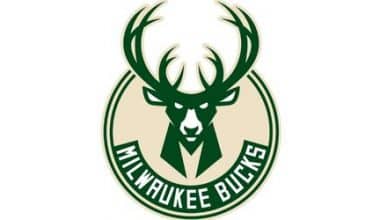Laconic restraint and familiarity define the traditional Acura logo. The most important thing is that it meets all of the goals that were set for it, which were to have the look and feel of a relatively new but instantly recognizable high-end brand. The Acura brand and logo were made so that Acura, a Honda subsidiary, could sell luxury and high-performance cars in the US. Because of this, the American market was chosen as the benchmark by professionals in the fields of name and design, both industrial and visual. Furthermore, we are going to be discussing more on the Acura history, the evolution of the Acura logo, the symbols, etc.
The History of Acura
The Japanese automaker Honda introduced the upscale Acura brand in the middle of the 1980s. The business was founded in North America and now works on every continent by exporting luxury sedans and SUVs.
In 1986-1989
The Latin morpheme “acu,” which comes from the word “accuracy” and means “accurate” in the original language, was used by people who were good at giving names. The brand’s big name is the unique accomplishment of the NameLab studio, which was directly involved in the creation of the word “Acura.” The second part (“ra”) doesn’t make any sense; it merely serves to make the name easier to pronounce and more memorable. The name studio started with the word’s definition and used it to convey the soul of the vehicle company. After all, Acura is known for making cars in a very precise way, as you may already know. Thus, this is a cunning marketing ploy intended to draw clients.
Acura was started in 1986 for people who thought Honda products didn’t have enough style and class. The first versions of the Integra and Legend sold over 100,000 vehicles in a single year. Despite their high pricing, Acura-branded vehicles prevailed. Because of how well-known its wordmark was, the business decided to add a graphic sign to it. The symbol, which alluded to a relationship with Honda, was first used in 1990. It was made for SUVs and sedans and came in a variety of colors, with monotone silver tones predominating.
In 1986 – 1989
The date of the creation of the Acura brand is March 27, 1986. But the company did not get its logo until 1990. It is very strange, if not crazy, that it took so long between the launch of the brand (and the start of car sales!) and the appearance of the now-famous logo on the radiator grilles.
In Ira Bechrech’s NameLab studio, the Acura brand was developed. The Latin word “acu” served as the conceptual foundation for the design. It signifies “thoroughness, precision, meticulousness” in English. This word is still present in a dozen Latin-based languages, either as a separate word or as a morpheme, and it still has the same meaning.
This linguistic symbolism is employed in the advertising campaign for Acura in the American market. A “people’s” symbolism appeared in addition to the basic one. As a result, a competition to interpret the names of well-known brands was held by one of the automobile magazines. People were instructed to unscramble them and pretend they were acronyms. The phrase “Asia’s Curse Upon Rural America” won the category “Acura.”
1989 – Today
The 1989 update kept the futuristic uppercase logotype of the Acura brand but put a new, angular symbol on top of it. The letter “A” of the Acura logo is stylized and is made up of two strong parts with acute angles joined by a short, thin horizontal bar. This circular frame softens the otherwise ashy and harsh look of the clean lines in both the symbol and the letters.
Its Symbol
The Honda business, the brand’s developer, had grand aspirations when it created the Acura name and logo. The task of entering the American market was challenging. The company had high aspirations and a burning desire to dominate the premium-class market. The situation got better when the symbol, which was originally shaped like an “A,” showed up.
The dual meaning of the Acura sign is what makes it unique. Despite the noticeable break in the upper half of the alphabet, someone who is knowledgeable of the Acura brand will still see the letter “A”. It makes sense that the brand’s name contains the letter “A” at both the beginning and the end of the word. However, even people who are already aware of the logo’s past will see that the symbol’s legs contact the circle on both the upper and lower ends. Therefore, the mark can be read as “A” if desired.
The Acura logo came to be known as a “caliper,” a laconic yet brightly recognized combination. Despite the fact that the brand was obviously unrelated to drafting. However, the caliper is also a representation of precision and thoroughness in explanation. In short, Japanese technology is renowned for everything, including the automotive industry.
The Logo
The Acura logo resembles a square with rounded sides that is almost circular in shape. The “parent” logo (Honda) has less rounded edges. Additionally, it has a subtle but discernible continuity.
Later, a similar logo might be seen on Changan automobiles, a Chinese automaker. The Chinese business simply flipped this stylized letter in the Acura symbol over to use the stolen picture in international markets.
Keyrings, magnets, bags, and other branded items all feature the Acura logo. The logo lets people who use these promotional products know that they are elegant, accurate, and easy to use. It also shows how responsible everyone is on the team that makes cars, from designers to production engineers and workers.
Font
The original font, created especially for the brand, is used in the Acura logo. In the letters “A” and “R,” the horizontal bars are not joined to the vertical lines on either side. Only one side of them has been mended with a little carelessness. This typeface feature highlights a dignified driving style when only one hand is used to operate the steering wheel. Additionally, it naturally entails steering with assurance. In fact, the emblem highlights the dependability of Acura vehicles as well as its steering, maneuverability, and response to driver input.
The unique shape of each letter in the typeface gives it an unusual appearance. Each letter’s angles have been softened, but they have been retained and can be seen. This characteristic lends the font the appearance of assurance and dependability. As a result, comparable traits are extended to the brand as well as to those who regularly consume the brand’s products.
Colour
The Acura logo has a straightforward color palette. The insignia is colored silver. Although there are various effects—contour, indentation, and gradient—it is monochromatic. The best color combination for reproduction is this one. Additionally, it improves the logo’s appearance. Aristocratic, dignified, and restrained luxury can also be added to the logo’s symbolic meaning if color symbolism is taken into account.
Color and Font
The primary Acura badge’s contemporary uppercase logotype is written in a strong, futuristic sans-serif typeface with thick, slender bars and some lines with sharp diagonal cuts. Aspire SmallCaps, with a few minor alterations, is probably the font that comes the closest to the one used in this insignia.
The Acura visual identity’s color scheme is composed of the classic black-and-white combination, which is always considered fashionable and professional. The emblem and logotype change to silver metallic when they are placed directly on the brand’s automobiles.
The Growth of Acura Logo
The brand was made around the same time that Japanese competitors Nissan and Toyota were making their high-end Infiniti and Lexus brands. Because the Japanese government put restrictions on exports to the U.S. market, it was more profitable for Japanese automakers to sell more expensive cars there.
In order to support its Acura automobile division, Honda opened 60 new dealerships in North America by 1986, after a decade of research. With the tagline “Acura Precision Crafted Automobiles,” Acura was the first Japanese luxury brand. Its initial lineup included two models: the executive class Legend and the compact class Integra, both of which were offered as five-door and three-door hatchbacks. The Legend was made by Honda and the Austin Rover Group in the UK as part of Project XX. The Integra was a development of the Honda Quint hatchback, whereas it shared mechanical similarities with the Rover 800 series
The popularity of these vehicles, especially the Legend, sparked the creation of two rival Japanese luxury brand ventures: Toyota’s Lexus, which started development in 1983 as the F1 project, and Nissan’s Infiniti, which started development in 1985 by updating its flagship Nissan President for Japan-only sales. In the late 1990s, Mazda was going to start its own luxury line called Amati, but it never happened.
The Nissan Cedric and Gloria and the Toyota Crown were the Legend’s main competitors, but after its 1986 global launch, Toyota, Nissan, and other automakers like Lincoln paid attention to how the market responded to the Legend and later the Vigor and provided vehicles that catered to the executive size car market. Nissan unveiled the Infiniti J30, whereas Toyota unveiled the Lexus ES. Ford, on the other hand, used the Taurus platform and dubbed their new sedan the Lincoln Continental.
In 1987
Acura’s first full year of sales, they sold 109,000 cars with the flagship Legend sedan accounting for 55,000 sales and the rest were of the smaller Integra. By 1990, Acura was selling 138,000 vehicles, including 54,000 Legends, compared to Mercedes-78,000 Benz cars and 64,000 each for BMW and Lexus
Then in 1990s
The logo of the company was first introduced in 1990. According to the official explanation, it represents a caliper, a precise and accurate measuring instrument, with the idea of highlighting the exceptional quality of the brand’s vehicles. However, a lot of people noticed how similar the insignia was to the national flag.
In the Acura logo, the black color stands for elegance, sophistication, and power. The white color, on the other hand, stands for confidence, honesty, purity, and the metal element.
Even though consumers seemed to like the Acura brand at first, sales went down in the middle 1990s. Some critics thought that the less appealing designs used to rebrand Japanese Hondas as Acuras, like the 1992 Acura Vigor, were partly to blame for the drop in sales. During this time, Acura also switched to an alphanumeric naming system. The Legend, Vigor, and Integra names were dropped to follow the lead of the sports car NSX.
Many people saw the 1996 3.5 RL, which took the place of the well-liked Legend and the Vigor, which became the 2.5 TL and 3.2 TL, as the pinnacle of this issue because the alphanumeric designations were less recognizable than the former Legend, Vigor, and Integra titles, which had developed their own cult followings. Because of the Japanese asset price bubble in the 1990s and early 2000s, Honda’s parent company was also hurt by the Japanese economy’s decline. Japan refers to this era as The Lost Decade.
The Setback
Subsequently, sales of the NSX decreased during this time due to Acura’s lack of changes from the 1990 trim level. A year later, the Integra sedan was taken off the Canadian market. It was replaced by the Acura 1.6 EL, which was a Honda Civic/Domani with a new name. Up until 2001, the Integra sedan was still sold in the US (in name only; the model it was replaced with, the RSX, was simply a rebadged left-hand-drive version of the JDM DC5 Honda Integra).
Even with these setbacks, Acura became popular in the 1990s thanks to a young customer base of “tuner” enthusiasts. Acura benefited from the reputation of Honda’s parent company as a maker of “easy-to-tune” and “rev-happy” engines among this group, and the Integra became a popular tuner car.
In 2000–2003
Around the year 2000, Acura went through a renaissance. This was due to the release of many new models. The first of these designs was the posh sedan 1999 Acura 3.2 TL. Critics said that the 3.2 TL was a good mix of sportiness and luxury, even though it didn’t do better than its competitors in any one area of luxury cars. These features, along with the TL’s affordable pricing, made it very popular with customers. Later, Acura models followed the same pattern, with a lot of standard features and few options.
The Honda Odyssey minivan was the basis for the Acura MDX, a popular three-row crossover SUV that came out in the early 2000s after being redesigned. The slow-moving SLX, which was essentially an Isuzu Trooper with a different name, was replaced by the MDX. The MDX was a crossover SUV that looked like a car and could only go so far off-road. It was made for the luxury SUV market.
Comparison Test
In its first comparison test against seven other SUVs, it received top marks from Car and Driver. Other vehicles in Acura’s lineup at the time included the 3.2 TL, 3.2 CL, RSX (formerly the Integra hatchback), and the NSX. Acura stopped including engine displacement numbers in its car nomenclature by the late 2000s, choosing to stick with a two- or three-letter identification instead (e.g. 3.5 RL became RL). The TL was plagued by transmission and other issues from 1999 to 2003.
A new coupe bearing the RSX name was added to the Acura lineup in 2001. It served as Integra’s replacement. The Honda Integra (DC5) from the Japanese market is the basis for the RSX. As a result, the RSX technically represents a new Integra generation. The RSX saw success in the tuner industry, much like the Integra. It was, however, removed from the Acura lineup at the end of 2006 and subsequently from the Japanese market as well. It is unknown why the RSX was discontinued as the Integra in Japan. Acura, on the other hand, said that the RSX was no longer made because the company wanted to strengthen its reputation as a luxury brand and couldn’t market a car that teens mostly used.
2004–2006
For the 2004 model year, a new TL with a 270 horsepower (200 kW) V6 measured by the time’s SAE standards was released. Sales of American units rose considerably to 70,943 in 2005 thanks to the new TL.
The Acura TSX was also released around this time. It was primarily a Honda Accord with extra equipment for the European and Japanese markets. This particular model was the only 4-cylinder car offered by Acura (with the exception of the Canadian market Acura CSX, which replaced the EL in 2006).
Super Handling All-Wheel Drive (SH-AWD), a technology that can direct nearly all of the RL’s power to just one wheel in a turn, and a 300 horsepower (220 kW) V6 engine were added to the 2005 model of the RL. The second-generation RL was listed as one of the top ten cars of 2005 by Car and Driver.
When the RL was released, it didn’t think Acura was on par with its German rivals and expected better value from the Japanese brand. It earned an “Editor’s Choice” on CNET.com. The alleged hubris of Honda Japan caused damage that was completed, despite the fact that Honda Canada has already lowered the RL’s pricing
The TL and TSX in particular were warmly welcomed by the automotive press and, by that point, were Acura’s best-selling models. From 2004 to 2006, the TSX appeared on Car and Driver’s Ten Best list.
The Acura RDX
The RDX, a small SUV from Acura that debuted in 2006, was built on a special unibody chassis and went on sale to American customers in August of that same year. It features Acura’s SH-AWD system and has a 4-cylinder turbocharged engine with 240 horsepower. In the fall of 2006, a completely revamped MDX with a 300 hp (220 kW) V6 engine and Super Handling All-Wheel Drive was made available.
2007–2013
The TL Type-S was re-released by Acura for the 2007 model year. All three models made their debuts in the 2008 calendar year; 2009 saw the introduction of the brand-new TL and TSX models, as well as a mid-year model, upgrade for the RL. (Zolpidem) In addition to announcing the production of a brand-new luxury crossover car with the moniker “ZDX,” which was hinted at by the concept of the same name, Acura intended on redesigning the RL by 2011.
The ZDX was the first Acura made at the company’s design center in Torrance, California. The 3.7-liter V6 engine (300 horsepower) and SH-AWD system from the Acura MDX served as the basis for Michelle Christensen’s design of the ZDX. Additionally, it is the first Acura entirely constructed in North America. On October 15, 2009, the ZDX production model made its premiere at the Orange County Auto Show in Southern California. The body of the ZDX is designed with the idea that it is a “four-door coupe,” with the emphasis on a “pulled back slingshot,” and wide rear shoulders above the rear wheels as another prominent design feature. Sales of the ZDX began in December 2009.
In 2008
When the economy collapsed in 2008, Acura postponed its initial plans for the third generation of the RL to be a rear-wheel drive V8 sedan as its flagship.
A new TSX wagon from Acura was unveiled at the 2010 New York Auto Show and was on sale that fall. The wagon version of the TSX is based on the Honda Accord Euro-spec wagon, which has been on the European market for a while. Acura did not, however, make any plans public regarding the third-generation RL.
The MDX models got some minor external updates and more equipment for the 2010 model year. The 5-speed transmission was changed to a 6-speed transmission with shift paddles on the steering column. The mechanical parts of the engine stayed the same. The ZDX and its new transmission were both present.
In 2012
Acura made the Acura ILX, which is based on the Honda Civic platform. It replaced the Acura CSX in Canada in 2012. Three different powertrains were initially available for the ILX: a 1.5L four-cylinder electric hybrid shared with the North American Honda Civic Hybrid and mated to a CVT, a 2.0L four-cylinder R20A1 mated to a 5-speed automatic transmission, or a 2.4L K24Z7 mated to a 6-speed manual transmission outfitted with a limited-slip differential similar to that found on the 2013-2015 Honda Civic Si. The Acura RLX Concept, which is a replacement for the RL sedan, was also shown off at the New York International Auto Show. In the US, the ILX went on sale in May 2012 as a 2013 model.
Acura “reinvented” the RDX concept, another car, in 2012. Acura substituted a 3.5L V6 for the 4-cylinder turbo in the new model. Although the wheels, taillights, and other exterior features had changed when the 2013 Acura RDX was officially shown, it still resembled the concept car somewhat. This Acura shares a lot of similarities with its ILX brother. The 2013 RDX has “AWD with intelligent control,” which is comparable to the AWD system in the CR-V, in place of the SH-AWD system.
2014
Acura debuted a 2014 Concept of the MDX in 2013. It was soon made available to the whole public. The Lexus RX, the Audi Q7, and numerous other vehicles are competitors of the MDX.
Acura showed off a Sport Hybrid SH-AWD version of their high-end RLX sedan at the Los Angeles Auto Show in December 2013. It boasts a new 7-speed dual-clutch transmission, a 310-horsepower 3.5L V6 engine, and two electric motors (one for each axle) that together produce 377 horsepower. The 2014 RLX Sport Hybrid SH-AWD also features an electronic gear selector, an Acura first, that swaps out the traditional shift lever mounted on the center console for a cleverly designed push-button array that makes it simple for the driver to choose the desired mode—Park, Drive, Reverse, as well as Sport and Normal driving modes. Midway through 2014, the new RLX Sport Hybrid will go on the market.
2014–Present
The brand-new 2015 TLX sports sedan was introduced by Acura in January 2014 at the Detroit Auto Show. The soon-to-be-retired TSX and TL sedans were replaced by this new car. The brand-new eight-speed dual-clutch DCT gearbox from Acura is standard on the TLX with the 2.4-liter engine. The premium 3.5-liter V6 model, on the other hand, included a new nine-speed transmission and Super-Handling All-Wheel Drive (SH-AWD). In the summer of 2014, the TLX went on sale.
For the 2016 model year, Acura revamped the ILX in 2015. No longer offered with the 2.0L R20A1 & 5-speed automatic transmission, the 2.4L K24Z7 and 6-speed manual transmission, or hybrid electric choices, only the 2.4L K24V7 engine and 8-speed dual-clutch transmission (DCT). Updated wheels, suspension tweaks, a redesigned bumper, the recognizable Acura Jewel Eye LED headlights and taillights, the signature Acura Jewel Eye LED taillights, as well as new packages like the AcuraWatch Package (which includes adaptive cruise control, collision mitigation, lane keeping assist, road departure mitigation, and forward collision warning) are also included (sportier appearance).
The 2016 RDX has also undergone redesign. Featured the same 3.5L 6-speed automatic with a few minor changes for increased efficiency and horsepower/torque. The Acura Jewel Eye LED is also applied to the RDX. With the addition of front and rear parking sensors, rain-sensing wipers, auto-dimming side mirrors, remote start, ventilated seats, and foglights, a new Advance Package is now available.
What is the meaning of Acura logo?
The caliper, a precise design tool that symbolizes the rigorous attention to detail that goes into every Acura, served as the inspiration for the logo.
Is Acura a Toyota car?
While Lexus is the luxury line for the Toyota Motor Corporation, Acura is the luxury line for the Honda Motor Company.
Why is Honda called Acura in America?
The morpheme “acu,” which in several languages indicates “precisely” or “with care,” is the source of the opulent brand name Acura.
Is Acura better than Honda?
Both options are virtually the same in terms of quality and safety. The three key differences are luxury, power, and cost. Honda is a great option if you’re seeking something more reasonably priced. The Acura is a great option if you want something opulent and swift.
Is Acura a luxury Honda?
Honda is a Japanese carmaker with its luxury and performance division, Acura, centered mostly in North America. The company began promoting luxury and high-performance vehicles on March 27, 1986, in the United States and Canada.
What is the luxury brand of Toyota?
Toyota’s luxury business, Lexus, shares components, platforms, features, and powertrains with other Toyota brands.
Do acuras have Honda engines?
And because Honda and Acura are so closely related, both brands utilize the majority of these technologies.
Conclusion:
The Acura automobile logo is quite straightforward and organic. Even so, it is well-recognized and adored throughout the world. This logo is a simple response to client demand. It is escalating daily. The English letters “A” and “H” appear as two separate letters in the Acura logo. Actually, it is equating Honda and Acura.
Related Posts
- BEST FISHING ROD BRANDS: Top 27 Brands to Check Out (Updated!)
- JAPANESE CAR BRANDS: A Complete List of the Best Options in 2023
- BEST MOTORCYCLE BRANDS: Top 21 Brands in the World for Beginners & Pros
- What Are the Most Reliable Car Brands of All Time? (Extensive 2023 List)
- PHOENIX SUNS LOGO: Meaning, Font and History
FAQs On Acura Logo
Is Acura logo same as Honda?
The Acura logo, like its “father” Honda, is reserved, aristocratic, unique, and distinctive. The element in the center of the symbol is a stylized letter “N,” not a “compass” or a modified “A.”
Is Acura a luxury brand?
Acura is a luxury brand because it has high-end features both inside and out that provide an overall experience distinguished by comfort, performance, and style.
Is Acura more luxirious than Lexus?
Lexus is more focused on luxury, while Acura wins in terms of performance. Any Lexus vehicle that is comparable to Acura in terms of performance will cost you extra for a better trim and other modifications.
